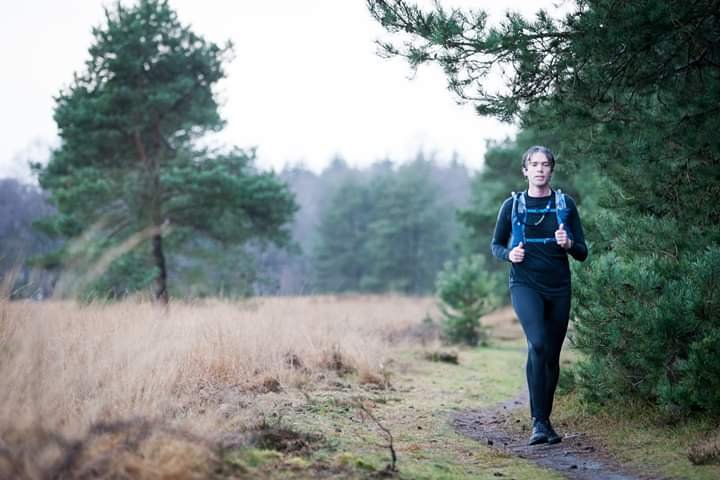
No medal, no certificate: there wasn't much more in it than a stage of 55 km of finishing. And yes, I'm sad about that. Yet there were also beautiful and instructive moments.
It's 2 o'clock in the night and I prick my finger. Very afraid that the sound will wake others, I'm not. The other 30-40 men in this room, will largely have the same restless sleep, with every hour of the clock passing by. Worsened by the fierce exit sign and the fact that the only two toilets for the 50 participants and organization are in this room.
Blood sugar was too low. The night before, because of the adrenaline and the dreaded lack of food, the blood sugar had risen to 25.3 mmol/l (target value 6 mmol/l) and that really had to be compensated to prevent cramping. That shortage was actually there: 1 cup of soup with a slice of baguette on the eve of a weekend of walking 105 km is anything but stacking.
Another piece of preparation that didn't go well. By mistake I had already brought the summer sleeping bag – was in the wrong cover – one of my training kilometers of the last few weeks had been limited due to work stress. What had I started? Can you train for this at all? Still, after a few marathons, well run Airborne Freedom and smooth multi-day running – among others on Lanzarote – I was confident enough to say yes. To take up the challenge.
Ready to start
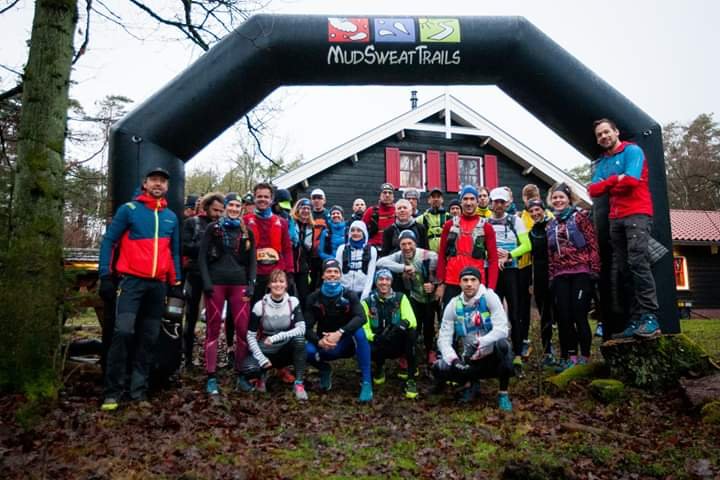
At 6.15 am we were woken up because breakfast was in the dormitory. For me the sign to first of all prepare all the food for on the road. A bit selfish maybe, but not doing that can lead to big problems with 1 care post. In total I made two mixes with torq and three with Generation Ucan. Four bottles in the racing vest, one to take half an hour in advance. And for the rest the vest was of course full of pricks, 1 litre of normal water, nougat and gel. Plus the obligatory kit, including first-aid kit and heat blanket. It was so full that I decided to take a thinner raincoat as it would only rain for a short while.
As a diabetic, the nutritional strategy is simply very different. As I desperately tried to wrestle my sleeping gear into the dropbag, I saw around me half loaves of bread on a single plate. My breakfast: cornflakes as usual, 1 bottle of Ucan (doesn't work immediately) and 2 units of insulin less than normal. I know that if I keep on drinking while walking, I can keep on racing. Of course I skip the lunch insulin later in the day.
After dinner and the toilets – indeed 2 on 50 nervous runners – it was a long wait before the start. But in my mind I already saw the finish, where I had cola and chips in my bag as a reward. At 8.37 am – sunrise – we left for 55 km to Beekbergen. Something with rules of Natuurmonumenten and light enough in the forest.
Garbage dump
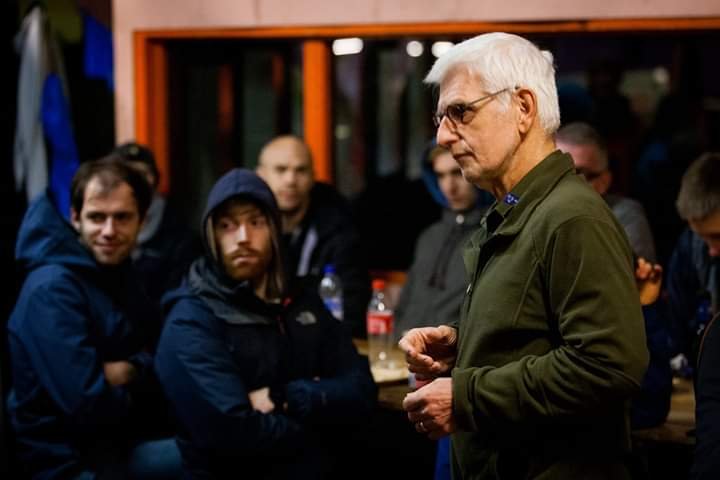
Without Natuurmonumenten that forest in which we started would never have been there, the forester of the northern Veluwe told us during the briefing on Friday evening. As long as mankind grows and becomes more prosperous, nature will perish (although we ourselves are part of the ecosystem and this too is natural). The Veluwe, too, once arose from a problem similar to the current climate problem. The ingenuity and obstinacy of mankind gives hope.
In a nutshell: the top layer of the Veluwe was excavated because of the iron ore in the Middle Ages (around 1200). The area around Arnhem was then what the Ruhr area is today. Also the wood – deciduous trees – came in handy. First for charcoal in the melting furnaces, then for paper and ships. In the 19th century the wood had run out, and there remained drifting plains that can be used for little more. Because of the rise of the big cities it was suggested to dump the surplus of dirt from the city in those plains. Natuurmonumenten is the protest group that prevented this by buying up the land. And who later started to grow pine wood on it – that grows well on the poor soil – which resulted in the Veluwe as we know it now: pines, drifting dunes, heather, deer, wild boars and here and there a wolf.
The start from our stay in Hierden was in any case beautiful. We walked along a stream with many wooden bridges. Fortunately there was chicken wire on it so the Superiors flew neatly over it. And it also made the cold and hail a lot more bearable. Meanwhile I tried to get something from what the forest ranger had told me about. However, the body went quickly on autopilot. It's a pity that another fact of the forest ranger's life stuck better: the Veluwe is a ridge, so you walk continuously false flat.
Your pace or mine
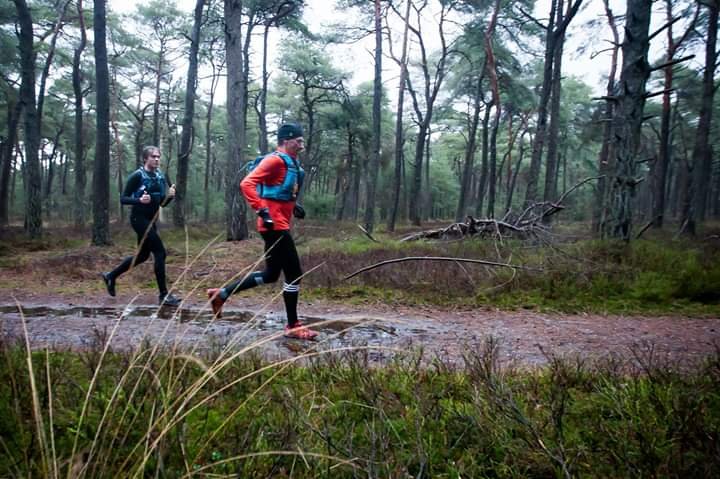
One of my big problems with longer races is that I often start fast. Restlessness, a lot of people at the start, surplus of energy and fear for the end time sometimes make me a really wild dog. Nothing wrong with that, my inner child has to be able to play as well and finishing time is not important to me. But for a long run it's killing.
With only 50 participants, I also expected to run alone early in the race. Especially since there were some very strong runners and I'm not very fast, to put it mildly. To my surprise I walked the first 20-25 km reasonably well with others, although it soon became clear that I shouldn't set my pace on them. That's why I let them run away slowly after a few kilometers. The blood sugar also cooperated well. I hardly had to eat any extra food besides the Torq and Ucan and was actually completely self-sufficient during the stage.
The soft flasks in the front pockets of the vest were exactly on at the nursing station 30 km away. Nice change. Although my clumsiness makes the MST tablecloth smell a bit like Ucan orange now, I'm afraid. Luckily one of the volunteers quickly came to the rescue to make it easier to change the clumsy straw at the soft flask.
Surprise
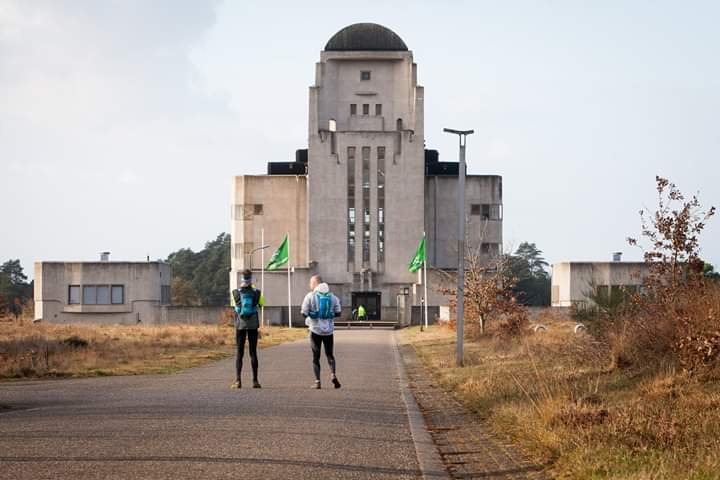
What I really didn't expect at the nursing post was to see Remco and Inge. Remco (thanks for the lift from Zoetermeer btw) is normally a lot faster than me, although he had bruised ribs beforehand. Was I running too fast for my own ability? The heart rate was always zone 4.2-4.5…
Remco and Inge were a little through. Something that also bothered me after the 27-28 km. So once in a while they walked a bit – until then I only walked for a bit of nougat – and then a slow pace is about as fast.
We changed pennies regularly for the rest of the match. Together we went to radio Kootwijk, over a sand drift and through a piece of forest.
After about a marathon distance and some nasty pieces of mtb-track, I decided it was time for some music. Up to 40 km were the ears out, and I was not really in the new audiobook.
The pace and running style improved immediately. But also the emotions of recent times came up. Among other things, I had to think back to my father-in-law, and how he picked me up after a race or that he was proud of a run I did. And of my wife, who is still struggling daily with his death. My breath got all tangled up because I didn't want to cry hard. Life is a mess. But I was a little too proud to let it go, Remco and Inge were somewhere behind me and would pass by again.
On the other hand, it's also special that this doesn't happen with emotional music, but with DJ Paul… To get the rhythm back, he was on the downloaded list for the Rotterdam marathon. Despite the lack of breathing there was actually 6.45-7.00 min/km in it again.
A dead phoenix

However, the nice pace came to an end. Not because the body couldn't handle it. Honestly, I felt much better on rhythm. The collapsed walking style was straightened out. The reason was that my watch had lost GPS. And if you have to navigate the route purely on gpx, that's a big problem.
At first I noticed that there were no more kilometers to the end in the display. After the first 50 directions, that's the standard display.
Then there was an exit along major roads that was not on the map of the watch. Only 100 m later I saw the road on the display. Restarting navigation, even taking a different route, didn't restore the map. Standing still didn't bring the GPS back. I tried to grab all my phone, but suddenly three other runners were behind me and I could join them. They were more used to walking and did the route according to the method Jeff Galloway: run-walk-run. Not because they couldn't run (mentally) like I did before, but as a strategy. And then you can get quite some results, as long as your run is fast enough. These guys did it from the start.
With them, I've come a few miles. It was pretty tough. Walking went faster than I did on average. Walking – a load I hadn't trained – hurt a bit, especially on the big toe, and I was too cold for it.
At the last 7 km they decided to walk the rest (although I guess they reversed that later). My body couldn't handle that very well. So try again and finally turn off the activity, walk a bit, and turn it on again to let the Fenix gps find it. It took a while, but it worked. Even though it was all very heavy now: the walking force was gone, most of the will and the calves hurt. The upper legs were fine because of the Nutritapes.
Finish
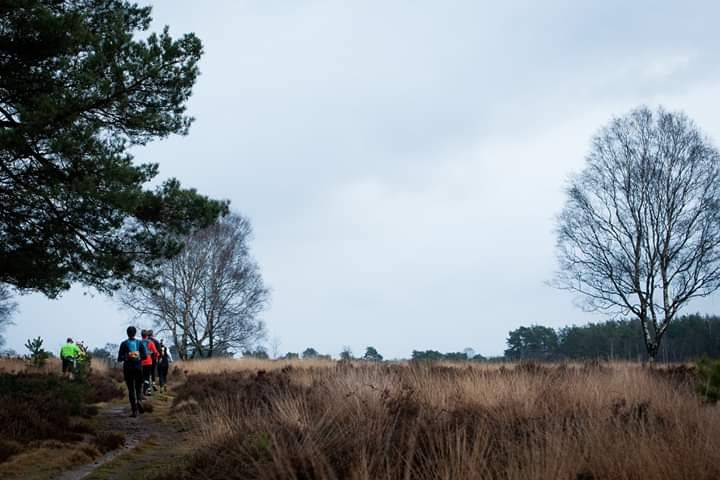
In those last kilometers I met Remco and Inge again. And I walked large stretches and let them go again. Eventually I finished at the same time as the run-walk-runners around a quarter past four, well in time for the 8 hour cut-off. It took me a while to swallow that much faster runners also took 6.5 hours. That's still an hour difference, but as a rookie I can't complain about my time at this distance.
I was so happy to be at the arch. My blood sugars were good as well (a bit high because of the slow last kilometers: 9.0 mmol/l). Coke, chips, hot coffee and a very long, very hot shower. I was red like a lobster when I came out of it.
The rest of the evening I was really tired and shivering all the time. It was a must to hear the briefing and the forest ranger.
The clock is ticking through the night

This time the night was not in a large room, but in a tent on a concrete platform. Luckily there were five of us in a tent: with the sleeping bag mistake it would be really cold otherwise. So I crawled into my extra warm liner, a fleece-lined tight, merino shirt, sweater and beanie. And closed it off until it was a mini tent.
I didn't really get cold. But again the hours ticked by. Again a nocturnal hypo (only the meter didn't work because of the cold). Pain when swallowing my nocturnal food indicated that I drank too little. And again waiting for sleep. Highlights of the night: my expensive sea to summit mat was flat and there was heavy rain. I started 4 hours ’ at night really doubting whether I would leave again.
Stage 2
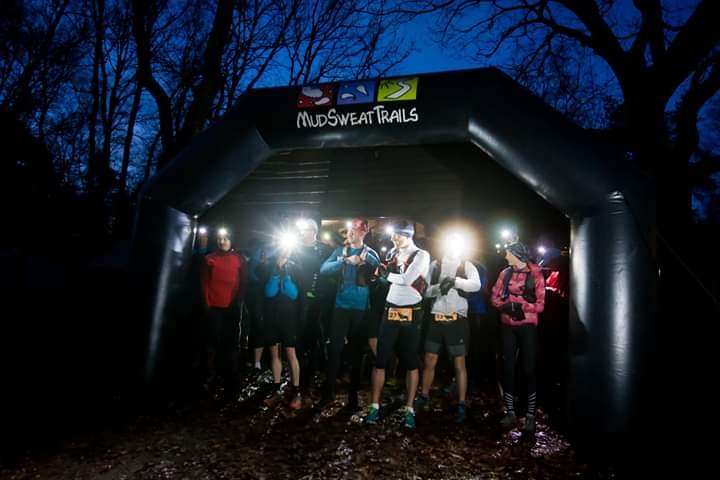
During the briefing Mark already warned that the heaviest part was the Posbank. Exactly after the nursing post. There would still be some hills there. But a very nice area, where I had already trained several times.
I saw through the hills and broke, but had confidence and four Nutritapes (also on the calves now). Yes, the ankles felt a bit sore, but that could have come from lying motionless in a tent. So just start. And really hurry to get the start. Because we started before sunrise because we weren't in the official park yet.
The first few miles were already hard. I noticed that the pace was low. So early in the stage. But most of all I noticed that the running style wasn't good. The stones along the track, mud slipping in the leaves, descending, jumping over trees, it all hurt. And every time the pressure on the undercarriage increased.
I walked uncertainly and very slowly when I was overtaken by Remco and Inge, on top of a leaf-covered path. The feeling of the finish came back.
Moments later I saw Mark riding his bike on a slightly lower road that seemed less slippery. There were also a few others (the last runners?) and Mark talked about the paths coming together again after a small lock. I took the turn a little earlier to the more solid path that wasn't quite according to the route, but the others gave a free pass.
I passed the sluice just after. Mark was just coaching someone over it. It was a plank wide, with a big fall to the water next to it and with a piece of metal on it where no Altra shoe stays on. I was glad I turned off earlier.
Two minutes later I was caught up again by Remco and Inge. The little bridge had put them behind.
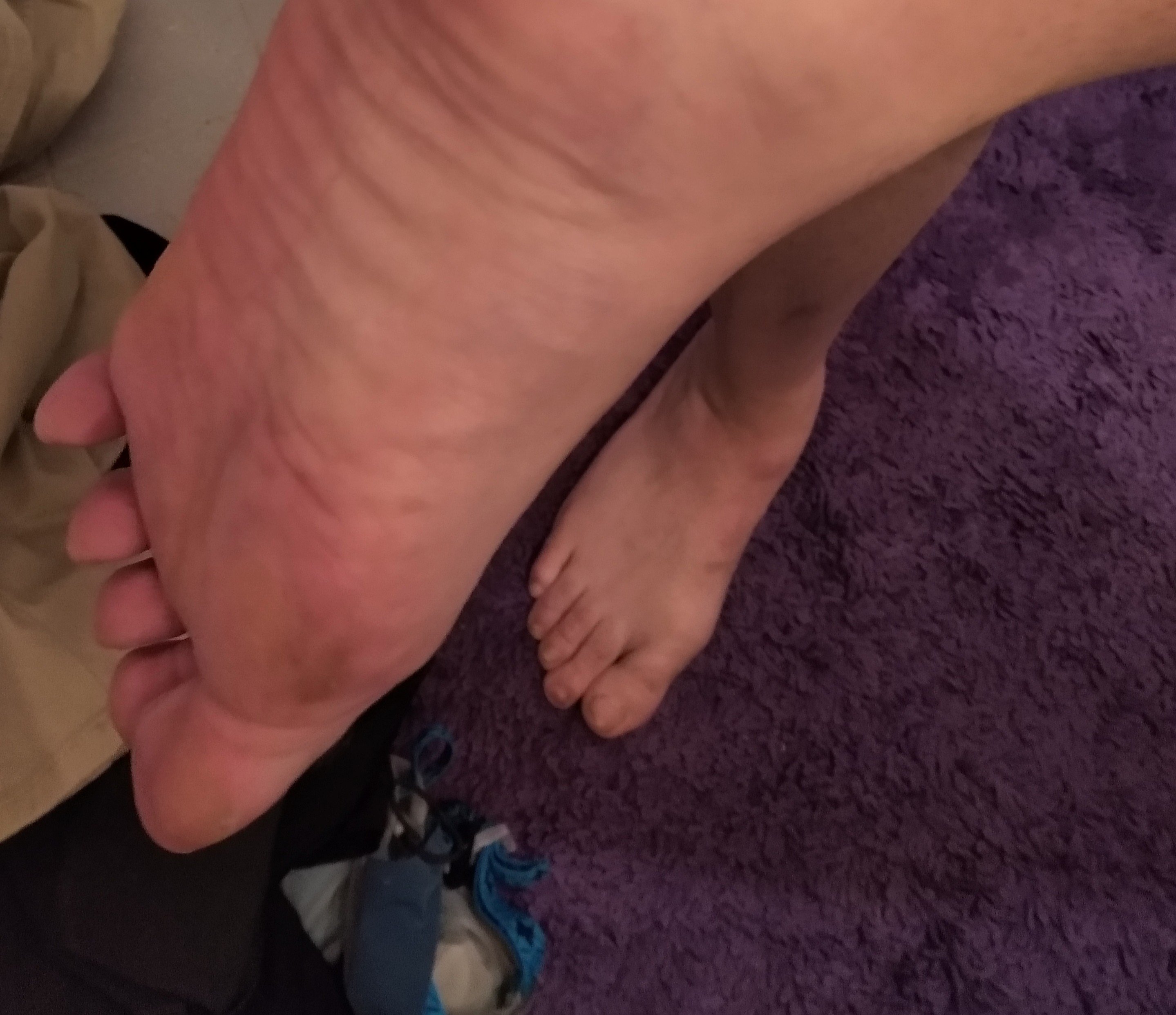
My times were slow, but the pain was still bearable. Until I greeted Mark for the last time after a road crossing and had to take a singletrack up. The path was wet, but not very muddy. Still I was gliding like Bambi over the ‘ice’. My hips hurt, my ankles were more or less stable, but the left knee stopped and I didn't have the strength to correct. Piece of walking: the pain remained. Piece of walking: practically impossible. With 43 km to go, of which the heaviest was yet to come, it was pointless to continue and increase the pain and problems.
For a moment I doubted if I would walk on to see if it would recover. But when will the next road junction be? I walked back to where I had seen Mark and first called my wife for support. Then the organization. I would walk up to them so they could pick me up quicker.
Walking along the road – 500-600 m – remained painful. The knee was clearly overloaded, I did not adjust. Hard, but I needed that confirmation.
There were already two other injured people in the van, including Collin who also drove along with Remco on the way there. He is super fast, but hadn't done a lot of long distances yet and wanted to prevent a sprain from becoming an injury by walking through the pain.
I shivered all the way to the scouting building, and into the building until I had my bag and could take a hot shower. Thanks to the parents of another injured person, I was able to go back to the station with Collin. Slipping through a bag was a crime, so I was very happy that Collin carried my heavy bag all the way to Utrecht.
Afterword
When you get home, it's time to sleep and think. Where did it go wrong? Sleep and cold play a role, I think. Because of fatigue – walking a little too fast also contributed to this – my walking style became bad. And that led to first ankle- and later knee pain. In order to prevent the latter, next time I will have to do more strength training.
The above may read like a lot of misery. Now that's my state of mind: sadness. But it was really nice to be in a large group of traillers. That always has a nice atmosphere. All a bit crazy, open, driven, safe, approachable. And the area in which we walked is absolutely beautiful. Marc W. and Mark G. put down a very nice and generally well cared for event. Only those nights were tough for this princess-on-the-pea.
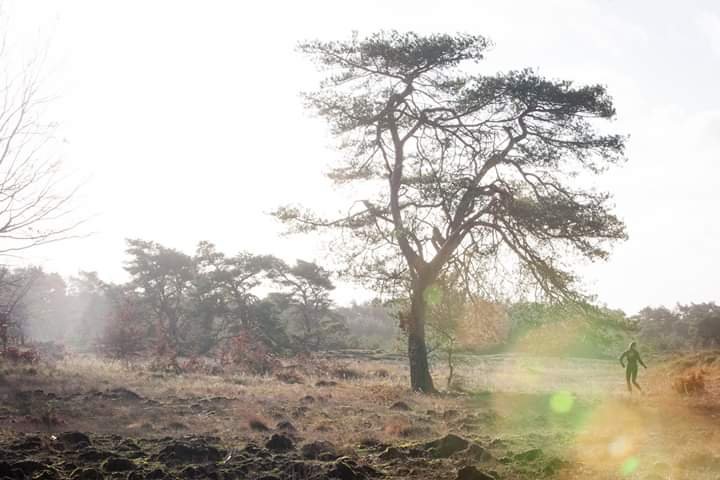
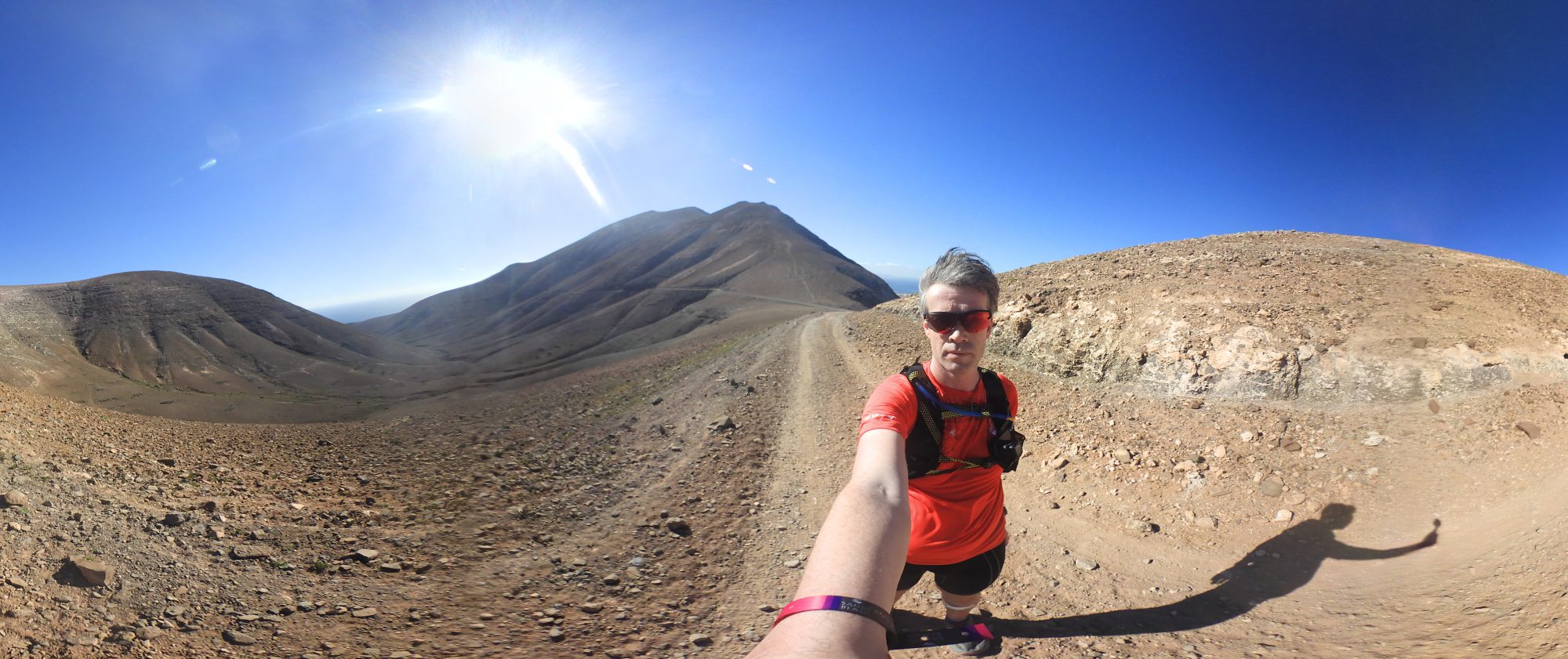
One Reply to “DNF: MST Winter Trekking 2019”
Comments are closed.